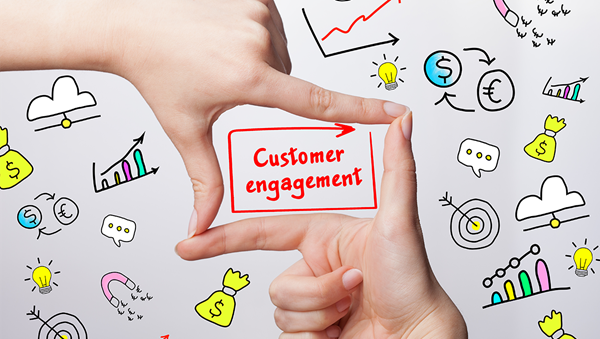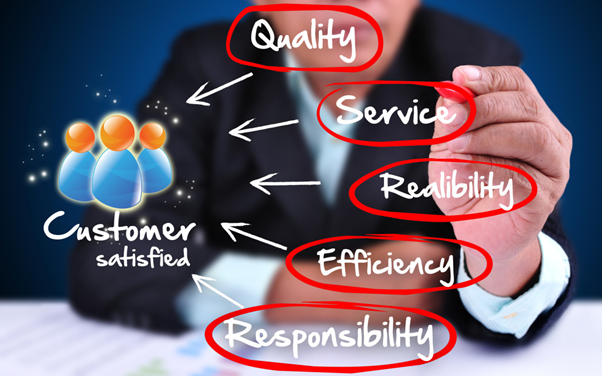SEO
Free SEO Analysis
SEO Services
Content Marketing Services
Local SEO
Link Building Services
Specialized SEO Services
PPC
REPUTATION MANAGEMENT
Free Reputation Management Analysis
Reputation Management Services
Review Management Services
Specialized Reputation Management Services
CEO Reputation Management
Brand Enhancement
Business and Directory Listings
Comprehensive Reputation Management Audit
SOCIAL MEDIA
Free Social Media Analysis
Specialized Social Services
WEB DEVELOPMENT
Free Website Analysis
Web Design Services
Mobile Development Services
Website Maintenance Services
Specialized Development Services
MARKETING AUTOMATION
Free Marketing Automation Analysis
Specialized Marketing Automation Services
Comprehensive Marketing Automation
INDUSTRIES
ABOUT DMA
Web Development
How to Ensure The Best Customer Experience Without Complicating the Development Process
Request a quote
Its Fast, Easy & Free
Executive Summary
- It's projected that by 2020, the customer’s journey with the company will become the key brand differentiator.
- 80% of businesses believe that they provide great customer care, while only 8% of clients agree with this claim.
- Consider 2018 as the year of optimized websites and start planning the incorporation of these innovations on your web pages to ensure future success.

“The customer experience is the next competitive battleground.”
The tables are turning for many corporations, as customer experience slowly overtakes prices and products. In fact, projected that by 2020, the customer’s journey with the company will become the key brand differentiator.
These estimations make sense since, according to Forbes, businesses experience a $62 billion overall loss due to poor customer service. Unfortunately, many organizations don’t yet recognize the value of interacting with prospects. But what is the problem?
Let’s start with responding in a timely manner. An entire 78% of consumers have abandoned their purchase solely due to a lack of support and service. However, this is just one part of the bigger picture that can be handled early on.
If you’re interested in selecting the right approach, and therefore avoiding complicating the business development process, pay attention to the latest trends, competition, market, software solutions, and above all, customers’ preferences.
What Do Customers Want?

“Everything starts with the customer.”
A recent SuperOffice study implied that 90% of companies don’t acknowledge or inform the customers when they receive an email. While 41% of organizations don’t respond to emails at all, and the ones that do handle it 15 hours and 17 minutes (on average) later without following up with customers.
To make matters more interesting, 80% of businesses believe that they provide great customer care, while only 8% of clients agree with this claim. Clearly, there is a big gap between what customers want and what businesses think they need.
New data came to light this year that connects customers with organizations. The conducted survey involved 7,000 consumers and businesses worldwide. And the results? The final conclusion, although somewhat expected, showcased that:
“Customers expect every touchpoint with companies to be immediate, to be personalized, and to be proactive. The ability to anticipate customer needs is at the forefront of what the report covered. In fact, 65% of consumers expect companies to interact with them in real time.”
Furthermore, the risk of losing a customer increases, given that 7 out 10 consumers reported that technology enables them to take their business elsewhere. Ironically, only 15% of companies use advanced tools to leverage customer experience, while 85% of businesses lack the understanding of new technology and the willingness to adopt it, even though it could help them improve the customer satisfaction rates.
It seems that marketers are not meeting the digital needs of the target audience. Nowadays, mobile sales are not an option, yet a rule they have to conquer, including the use of social media, marketing, and selling across multiple channels.
After all, it’s expected for digital devices to take over all of the aspects of customer interaction by 2020. This means that digital solutions will account for over 80% of customer interactions, making them the key to customer loyalty, increased sales, and better service.
Digital Customer Experience (UX) vs. Customer Experience: What is the Difference?

“The goal as a company is to have customer service that is not just the best, but legendary.”
Customer experience is defined by the customer’s interactions with the business, products, and overall service. The quality of these relations has the power to make or break your lead conversion rates and business success in general.
However, we live in modern times defined by digital communication. Hence, the digital user experience is the new customer experience standard marketers need to focus on and develop an appropriate plan of action for.
What defines a digital user experience? This type of experience includes interactions with a business throughout multiple digital devices such mobiles, tablets, or a computer. So researching products online, contacting tech support, and using a smartphone to pinpoint the next location is classified as the digital experience of consumers.
While there was a time when customers could wait for a couple of minutes for a service, rapid technology development doesn’t leave room for anything else than customer impatience. Waiting for the page to load even for 10 seconds in the online world could make a significant difference, to the point that 50% of site visitors just give up.
But the problem continues to spiral down, as without a proper website optimization the business starts to lose traffic along with its prospects. Since customers require a quick and unlimited access to a company’s offerings, marketers need to work on their digital skills and create a strategy that will cover:
Website development
Better mobile support
Consistent internal IT processes
Omnichannel support
Visual appearance
Interactive software tools
Simplicity of design (for reducing customers’ digital efforts)
Powerful analytics (for measuring customer satisfaction with the brand)
These are basic business essentials companies must practice for gaining leads and a broader awareness. As customer experience grows to rely more on the digital approach, the first step is ensuring that a business web service incorporates the customer expectations during the first stages of development.
Web Development Fundamentals
“Responsive Web Design always plays an important role whenever going to promote your website.”
The website appearance says a lot about the company’s trustworthiness and professionalism. You don’t want to make a bad first impression and repel visitors with poor design that makes things needlessly difficult.
So, covering the bare minimum for a functional site just won’t cut it. You have to define the business message and goals, as well as to optimize the web page for an easy communication with customers. Before launching a site and wasting a lot of time and money, create a solid plan of action. The website plan of development should consist of:
A clear vision for the website
. Do you want the users to subscribe to your email newsletter? If you wish to gain leads and create better marketing campaigns this option is crucial, so figure out what the homepage and the process of signing up should look like.
Website design
. Once you have your site’s objectives in mind and on paper, it’s time to focus on quality design and the company’s logo. It should be something memorable and closely related to business goals, operations, and message.
Specify service and products
. Customers prefer simplicity, so it’s your responsibility to help them understand what differentiates your business from the other competitors on the market.
Testing the design
. As mentioned earlier, the use of diverse digital tools is vital for measuring the performance of the website, including the overall business performance on the market. By integrating potent software and applying analytic tools, keyword research, and customer analysis, such as online surveys, you will discover ways to satisfy consumers and stay ahead of the competition.
How a Website Impacts the Visitors?

“90% of information sent to the brain is visual.”
What many entrepreneurs fail to recognize is the effect of a well-designed website. A business web page is a window into the company’s operations and personality. It represents the first impression and potentially the last interaction visitors will have with the enterprise.
Moreover, a website is one of the most important components of online marketing with a strong influence on the digital user experience. To put it simply, web design affects your ability to generate revenue. How?
Visual Appeal
Of course, website design is the first thing people will notice. Not investing or going overboard with it could only harm the chances of making a positive customer opinion and engaging consumers. So what should you do?
Start by researching the upcoming trends. After understanding the norms of a website’s visual appeal, it will be easier to incorporate those features into website development. Take into consideration that 65% of people are visual learners, as well as the fact that customers love personalization and responsiveness.
Speaking of statistics, visuals and the audience share a special bond. So the next time you are on the verge of underestimating a website design, remember that:
On average, a person reads only 20% of the content on a web page, but will view every image.
53% of consumers agree that pictures are more important than ratings and reviews.
67% of product users think images are more important for making a purchasing decision.
Interesting visuals are proven to increase the likelihood of people reading the website content by 80%.
Using a video on the landing page can increase conversions by 86%.
Corporate Culture
A website tells a story of the corporate culture as well. The impression that the company’s page leaves on visitors is how the business develops a positive or negative reputation. Therefore, if you wish for your design to paint a pretty and professional corporate picture, be sure to implement the following:
Photos of your staff
Customer comment and reply section or reviews
Customer results
A culture page
Nothing can connect visitors with the company like happy pictures of your employees. Customers will always trust and remain with a business that has good work ethics. Likewise, the online users like to take a peek at the thoughts of clients who already had encounters with the business and customer results that can highlight a level of professional and a more caring approach.
Last but not least, a culture page should showcase your values and believes. What does your business stand for? Do you have any special traditions or celebrations? Maybe some charity event to attend to or a cause to bring awareness?
The audience will always support an organization that has deep roots in the community. Associating the business with a charity of choice could help you raise the website traffic, loyal patrons, overall revenue, reputation, and still help those in need.
Navigation & Responsiveness
The alluring website appearance would mean nothing without the user-friendly platform. Your website should be as appealing as it is easy to navigate. Your visitors should be able to find the information they seek as quickly as possible. What navigation styles do we know about so far?
When it comes to navigation, you have probably heard about the drop-down menu and breadcrumb. Both of these methods are designed to navigate the visitors toward the purchase, but there are still many more navigation options to consider.
Although these styles are the most popular options, you can mix several approaches to ease the customers’ online troubles. If you take a look at some of the award-winning solutions, you could note how they succeeded in maintaining the simplicity of a design, color appeal, and offer an easy customer journey throughout their products and services.
Then again, we can’t forget about the site’s responsiveness as well. Given that 60% of all internet users are coming from their smartphones, you don’t want to lose the mobile audience with slow loading time, small fonts, and bad smartphone navigation.
As we have already determined, loading time or waiting for the page to display on the digital device is a deal breaker for consumers, so you need to implement several measures in order to reduce it. For example, you can optimize your images by using .jpg photos.
Not only will you save the high-quality impact, but you will also enable a better mobile experience. Additionally, try to avoid the automatic play of videos and multimedia, since this could slow down the user’s website access and challenge their patience.
Conversions
What is a website conversion? By many definitions, conversions are the most critical part of your website. Why? Because they can help you achieve the business goals and assist in strategic marketing management.
In its core, website conversion is when you convince a visitor to perform an action. It means getting the visitors to convert into shoppers, sign up for the newsletter, or to just hand out their information. How do you do manage that? Through a website design that keeps things simple, colorful, and respectively packed with inspiring imagery.
On the other hand, in order to measure the conversion rates, you will need the help of an analytic tool. This is the world of big data, so you will need an accurate hammer to nail down the numbers.
Thanks to Google, you can now efficiently connect your UI design with user experience (UX). By using Google Analytics, you can measure the conversions and the site’s success rate. However, this marketer’s tool can do so much more for your business. It can empower the growth of your organization by showing your website demographics, what devices your visitors use, how they get there, and what they do once landing on your page.
So, once you have a working site that is designed to pamper visitors, it’s important to first test and measure the projected objectives via this Google tool. The dashboard will track and measure your key performance indicators (KPIs) and notify you about the current trends.
Beyond Web: Design Predictions to Watch

“Behind every piece of bad content is an executive who asked for it.”
The beginning of a new year comes with some drastic changes in website design. And marketers have to follow trends if the goal is to stay on top, especially when those innovations bear the gift of multiple satisfied consumers.
In 2018, we say goodbye to minimalism and welcome more interactive design for increased user engagement. You can expect to see an array of interesting concepts, including:
Voice language search
Split, asymmetrical grid
More vivid colors
More animations
Bold and big topography
Stylish, almost editorial layout
As you can imagine, all of these design accessories have one purpose – to capture the viewer’s attention on any device. With a complete switch in layout, topography, grid, search, and color, the user is bound to get excited.
Although the designers have the freedom to experiment with colors and play with creativity, all of these elements need to remain subtle instead of intrusive. Which means a fresh website design needs to appeal to the target audience.
Having said that, the ease of mobile access will become a priority. Only this year, the 43.6 % of the worldwide website traffic was generated via this smart device. Plus, Google decided to join the cause by developing the new Mobile First Index which shifts the importance back to the mobile website version.
Consider 2018 as the year of optimized websites and start planning the incorporation of these innovations on your web pages to ensure future success.
Conclusion
“Your brand is so much more than what you sell.”
Corporations and consumers share a thigh, unbreakable bond. While some entrepreneurs don’t like to admit it, people turn an organization into a brand. Sure, companies can push the audience in the right direction, but only with high-quality care and assistance throughout the whole “visitors to prospects, leads to clients” process.
The truth is, business owners can’t do such a demanding job on their own. They need to invest in digital solutions that amuse, entertain, interact, and connect with the users. In other words, they need to invest in website development that will enhance customer experience.
And the only way to do so is by listening to these recommendations, doing the market research, and acquiring affordable, yet powerful digital tools. Once you complete these steps, it’s time to sit back and measure the growth results.
Our Sales team